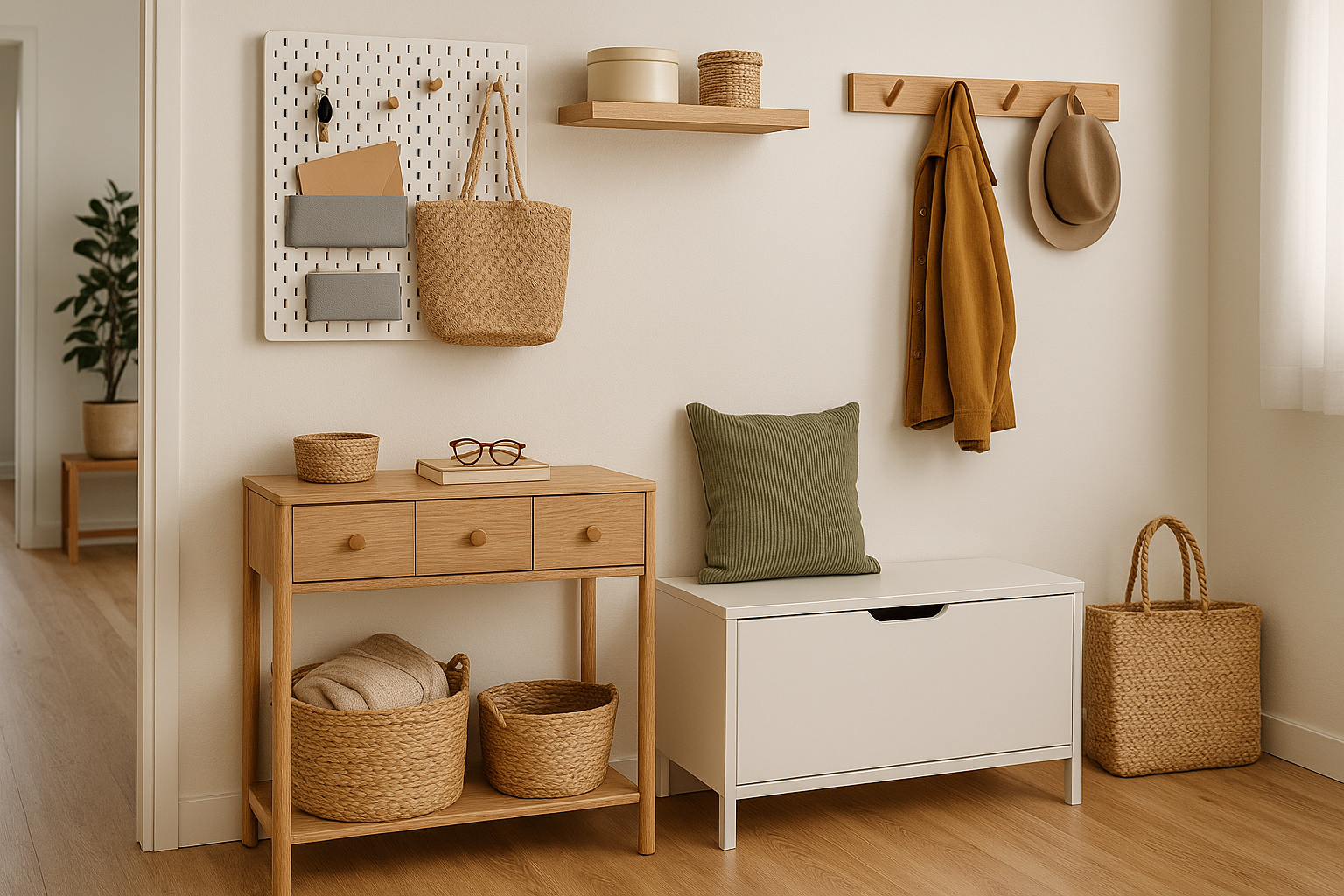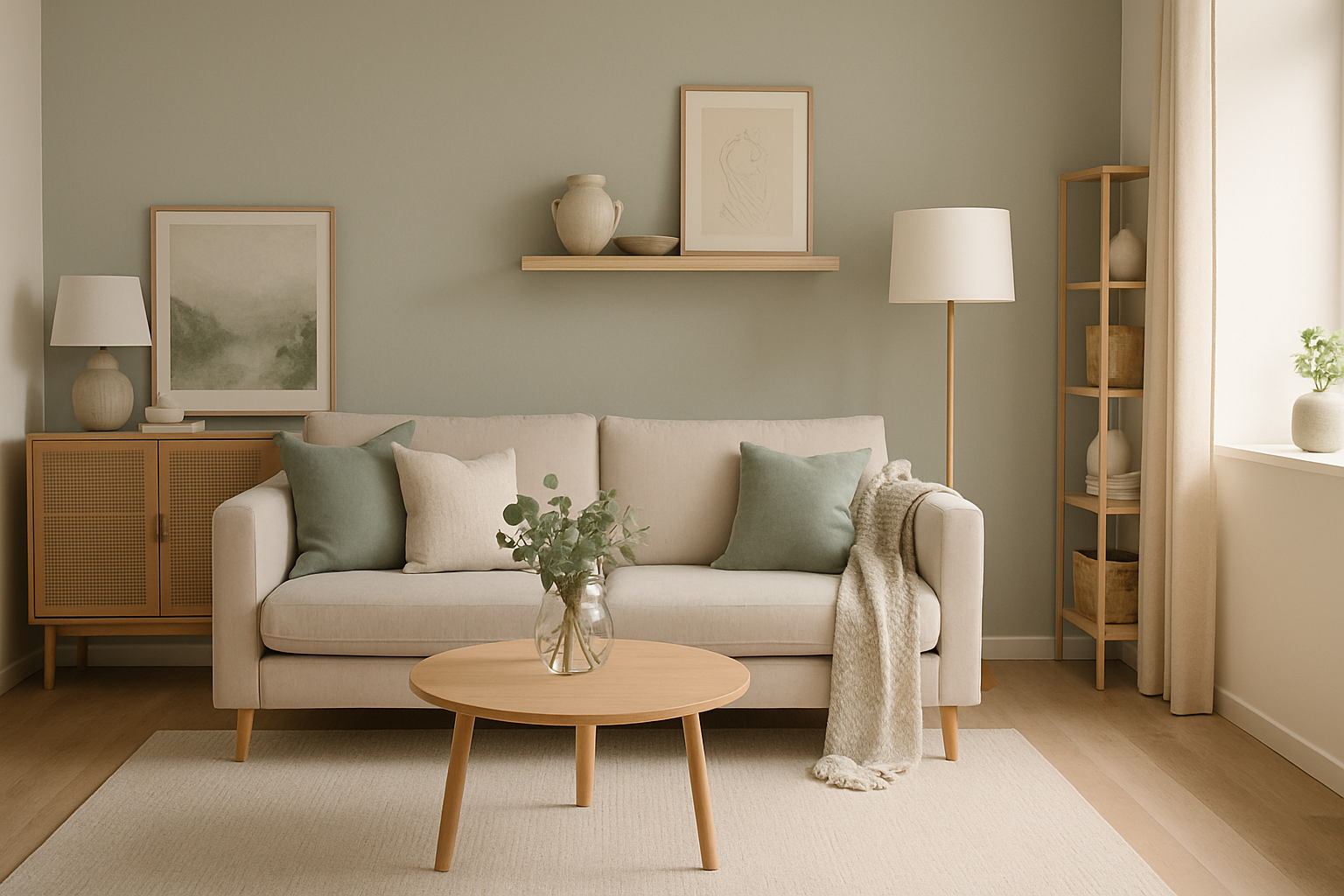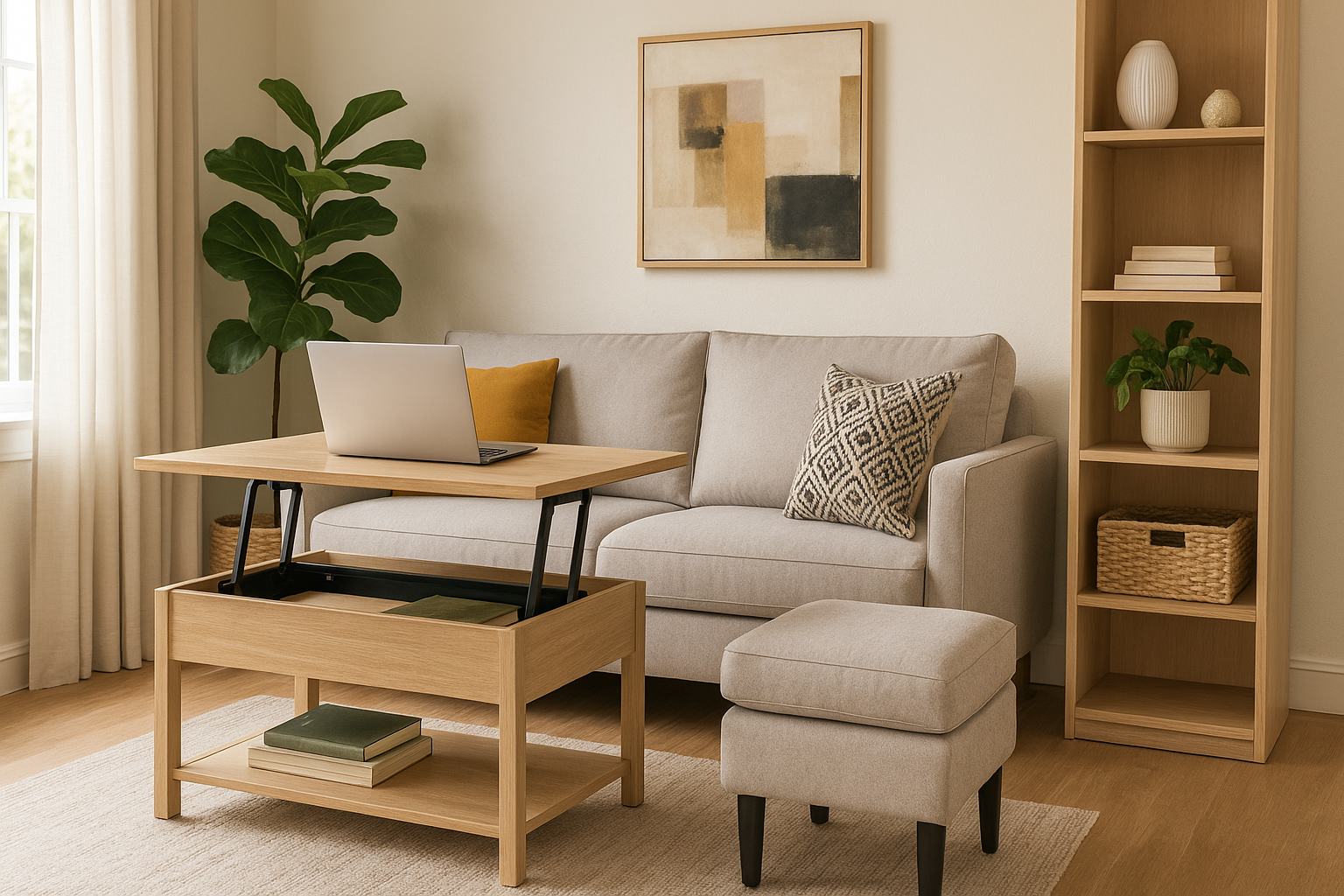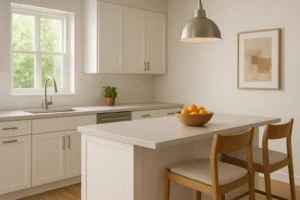A small house does not mean you must give up comfort or style. Many people now pick small homes on purpose. They want to live with less. They want to save money or live near family. Some love the charm that comes with a smaller space. A small home can feel warm and peaceful. It can also bring real design challenges.
Tight space makes you think. You feel the limits in storage, furniture, and layout. A sofa too wide or a table too deep can break the flow. In a small space, every choice matters. You must plan with care. You must use each inch in a smart way.
This guide shows how to make that happen. You will not just hear old advice. You will get real ideas that work. These tips go beyond mirrors or pale walls. You will learn how to shape each room with purpose.
From layout to light, from color to furniture, each part plays a role. These ideas work in city studios, tiny cabins, or family downsizes. No matter the layout, you can make your space shine.
This is your chance to turn a small house into something big-something stylish, smart, and yours. Let’s begin.
Living Room: Big Feel in a Small Space
The living room holds many tasks. You rest here. You host here. You might even eat or work here. In a small home, this room must do it all.
Start with scale. Use slim furniture with open legs. Choose a loveseat or sectional that fits the room. Avoid deep arms or bulky frames. Let your floor show. It helps the room breathe.
Pick a clear coffee table. Glass or acrylic keeps the space open. Try nesting tables to use only when needed. Avoid wide entertainment units. Use a slim console or wall-mount your TV.
Stick to pale wall colors. Light tones bounce light and stretch the space. Add color in small ways-pillows, art, or throws. Hang curtains high and wide. This trick lifts the eye and opens the walls.
Add mirrors where they reflect light. One across from a window works best. Use tall bookshelves or ladder shelves to add height. They give storage without taking floor space.
Kitchen: Simple Fixes with Big Payoff
Small kitchens can still cook well. You just need clear plans and a few smart upgrades.
Remove upper cabinets. Use open shelves instead. They hold dishes and mugs while making walls feel light. Add hooks under shelves to hang tools or cups. Use baskets above your fridge.
Add task lighting. LED strips under cabinets help with prep. Stick-on lights work too. Choose light, soft colors. White, mint, or sky blue keeps things clean and bright.
Try a fold-down table or rolling cart. Use it only when you prep or serve. Slim counters help too. Replace large knobs with thin handles. Store cutting boards upright in racks. Use magnetic strips for knives.
Use drawer dividers. Keep everything in its place. Space may be small, but mess makes it feel smaller.
Bedroom: Peace in a Tight Room
A small bedroom should feel calm. This space must help you sleep and think clearly. Clutter adds stress. Bad layout blocks rest. Smart design fixes both.
Start with the bed. Choose a low frame. This makes the walls look taller. A platform bed with drawers adds storage. Use it for clothes, shoes, or extra blankets. Skip tall headboards. Pick one with clean lines and a slim shape.
Clear the space beside the bed. Use wall lights. This frees up the nightstand. You can also replace the nightstand with a floating shelf. It holds a phone or book but keeps the floor open.
Pick soft wall colors. Use cream, light gray, or pale sand. These tones feel soft and quiet. They also help light move around the room. Avoid sharp colors. Stay away from busy patterns. One clean wall with a simple frame looks better than a wall full of prints.
Add a mirror across from a window. This brings in more light and opens the space. Hang hooks behind the door. Use them for robes, bags, or light jackets. Place a flat bin under the bed to hold things you use often.
Pick a tall dresser instead of a wide one. It gives storage without taking much room. Use trays or baskets to keep the top clear. Don’t pile things up. A clear surface makes the room feel calm.
Add only what matters. Choose one pillow with color. Place one small print above the bed. Use one soft rug near your feet. Let each piece add warmth, not clutter.
Balance is key. Let each item have a use. Let the colors feel soft. Let the layout stay open. A small bedroom can feel just right when it stays simple, light, and calm.
Bathroom: Style That Clears the Clutter
A small bathroom can still feel fresh and open. You just need smart design. A clean setup helps you move with ease. Every item must have a place.
Start with the sink. A floating vanity opens the floor. You can place a bin or basket underneath. Pick a shallow sink if space feels tight. Use a mirror that holds storage inside. It hides the small items you use every day.
Hang a towel bar behind the door. Add strong hooks for robes or towels. Use the wall above the toilet. A thin shelf can hold jars, soap, or cotton pads. Trays help group small things. This keeps the counter clean.
Keep the floor open. Place a basket in one corner if you need it. Avoid big bins that block the path. Use a narrow shelf next to the sink if needed. Choose items that stay tall and neat.
Pick a clear shower curtain. It lets light through and opens the space. Avoid dark colors or bold patterns. Use soft wall shades like warm white, pale gray, soft beige, or light blue. These colors reflect light and make the room feel calm.
Place your lights with care. Use two slim lights next to the mirror. They give soft, even light. Use warm white bulbs in the ceiling. Avoid bright blue tones. A soft glow makes the room feel relaxed.
Match your items. Use the same color for your towel, soap tray, and bin. This brings order. Too many colors or shapes make the room feel messy.
Only keep what you need. Place extras in a small box under the sink or in a cabinet nearby. A clear space feels larger. A simple setup helps you get ready fast.
You do not need much to make a small bathroom feel great. Clear the mess. Use soft colors. Keep the light gentle. Make it easy. Make it yours.
Storage: Make It Work Everywhere
Storage is the secret to a great small home. If you have space to put things away, you win.
Use boxes under your bed. Use ottomans that open. Pick a couch with hidden drawers. Add shelves above doors or windows.
Use hooks inside closet doors. Add baskets to hang on rods. Put labels on bins. Make it easy to find what you need.
Keep tables narrow in halls. Use small drawers or pegboards for keys or notes. Add a hook rail near the door. Drop your bag, hat, or jacket there.
In kitchens, use inserts. Store tools inside cabinet doors. Fold what you can. Use vacuum bags to shrink blankets or coats.
Keep what you use. Donate what you don’t. A clear home feels bigger.
Lighting: Brighten Every Corner
Light controls how a room feels. In a small home, good light makes everything feel open. Poor light makes the space feel tight. Every part of the room must feel bright and clear.
One light is not enough. Use layers. Start with a ceiling light to fill the room. Add wall lights to save space. Use table lamps near chairs or beds. Each one adds its own job. Each one changes the feel of the space.
Use lights where you spend time. Place a small lamp near your reading spot. Add a glow in the hallway or next to the bed. Use task lights in the kitchen. Add LED strips under shelves. These little touches bring light where it helps most.
Let the sun do its work. Keep windows clean. Use thin, light curtains. Avoid heavy fabric. Let natural light move through the space. A sunlit room feels fresh and alive.
Use mirrors to reflect the light. A mirror near a window doubles the brightness. It also makes walls feel farther apart. Place mirrors across from lamps to boost the glow.
Pick the right bulb. Warm white feels soft and calm. Cool white feels crisp and bright. Match the tone to the task. Use warm light in the bedroom. Use cooler tones in the kitchen or bathroom. Add dimmers if you can. They give you control from morning to night.
Plug-in lights work well. You don’t need to hardwire anything. Clip lights fit on a shelf. Clamp lights work near beds or desks. Stick-on puck lights work in closets or under cabinets. Use what fits your needs.
Place lights with care. Don’t crowd the space. Don’t leave it in shadows. Use enough light to feel clear, but not too much to feel harsh. A well-lit room feels safe, open, and full of life.
Color and Texture: Simple, Soft, and Strong
Color sets the tone before anything else does. In a small home, it must work harder. Light colors stretch the space. They help walls fade and ceilings rise. Soft beige, pale gray, and warm cream bring peace. These shades reflect light and open the room.
You can still use bold colors. Just limit them to one wall. Pick navy, dusty green, or soft clay. These tones pull focus without closing the room. Keep the rest of the walls light. The contrast builds depth without shrinking space.
Texture adds feeling. Smooth walls feel better next to a thick rug or rough wood. Place linen curtains near a wooden bench. Lay a woven throw over a crisp white bed. Small textures change how a room feels without adding clutter.
Use fabric that feels natural. Choose cotton, wool, or linen. These help calm the space. Avoid glossy, plastic, or stiff materials. Shiny finishes bounce light in odd ways. Loud prints pull the eye and shrink the room.
Use wood, metal, and glass with care. Wood adds warmth. Metal gives structure. Glass keeps the room light. Each one should serve a purpose. Place wood on floors or shelves. Use metal in handles or light fixtures. Pick glass for tables or small decor.
Keep balance. Don’t let one finish or texture take over. Every item must earn its space. A small room has no room for waste. Style must support comfort.
In small homes, color and texture shape the feel. They change how the room looks and how it lives. When you choose well, each part of the room feels soft, clear, and right. One color. One texture. One calm space.
Multipurpose Furniture: Every Piece Counts
Every item should do more than one job. A small home cannot afford lazy furniture.
Pick a coffee table that lifts to a desk. Use a bench with storage inside. A daybed can seat or sleep. Drop-leaf tables save space when not in use.
Pick stools that hide under counters. Use nesting tables. Use cubes with lids. Move them around as needed.
Choose light furniture. Heavy pieces take over. Use mirrors behind to expand the feel. Keep the layout clean and walkable.
Make It Yours Without Crowding It
Your home should still show who you are. Just do it with care.
Pick one spot to tell your story. A small shelf, a print, or a tray with souvenirs works well. Avoid crowding. Let each piece breathe.
Use a bold pillow or chair. Use quotes on one wall. Pick frames that match. Style bookshelves with balance-books, plant, and one item that brings joy.
Add a soft rug. Place a cozy throw. Keep the space warm and loved, not cluttered.
Frequently Asked Questions
What colors make a small room feel bigger?
Soft shades like white, cream, pale gray, or light beige open up the space. These tones reflect light and create a calm feel.
How can I add storage without cluttering the room?
Use under-bed drawers, wall hooks, and floating shelves. Pick furniture that hides items, like storage ottomans or platform beds with drawers.
What kind of lighting works best in a small home?
Natural light works best. Add layered lighting such as wall sconces, LED strips, or small floor lamps in corners to brighten every area.
Can I use bold colors in a small space?
A bold color works on one wall or in small decor pieces. Too much makes the room feel tight. Keep most walls soft and light.
How do mirrors help small rooms?
Mirrors reflect light and create depth. Placing one across from a window makes the room look wider and brighter.
What type of furniture suits a small home?
Choose pieces that do more than one job. Use a bench with storage, a bed with drawers, or a fold-out table. Keep lines clean and shapes simple.
Conclusion
A small home can feel full of life. It can bring peace, order, and beauty. You don’t need more space. You just need the right choices.
Plan each room with care. Let light flow. Let color guide the eye. Use storage that hides and decor that lifts.
Keep what you love. Let go of the rest. Every corner matters. Every inch counts.
This guide gives you tools. Now make them yours. Walk through your space. Look again. Then shape it into a place that feels just right.
A small home can still feel grand. Let it reflect you. Let it work for you. Let it welcome you.
You can draw timeless inspiration from grand estates like Spencer House London: Inside the Elegance, Secrets, and Royal History. Classic trim, soft wall tones, and vintage lighting can bring this sense of nobility into a modern small space.












